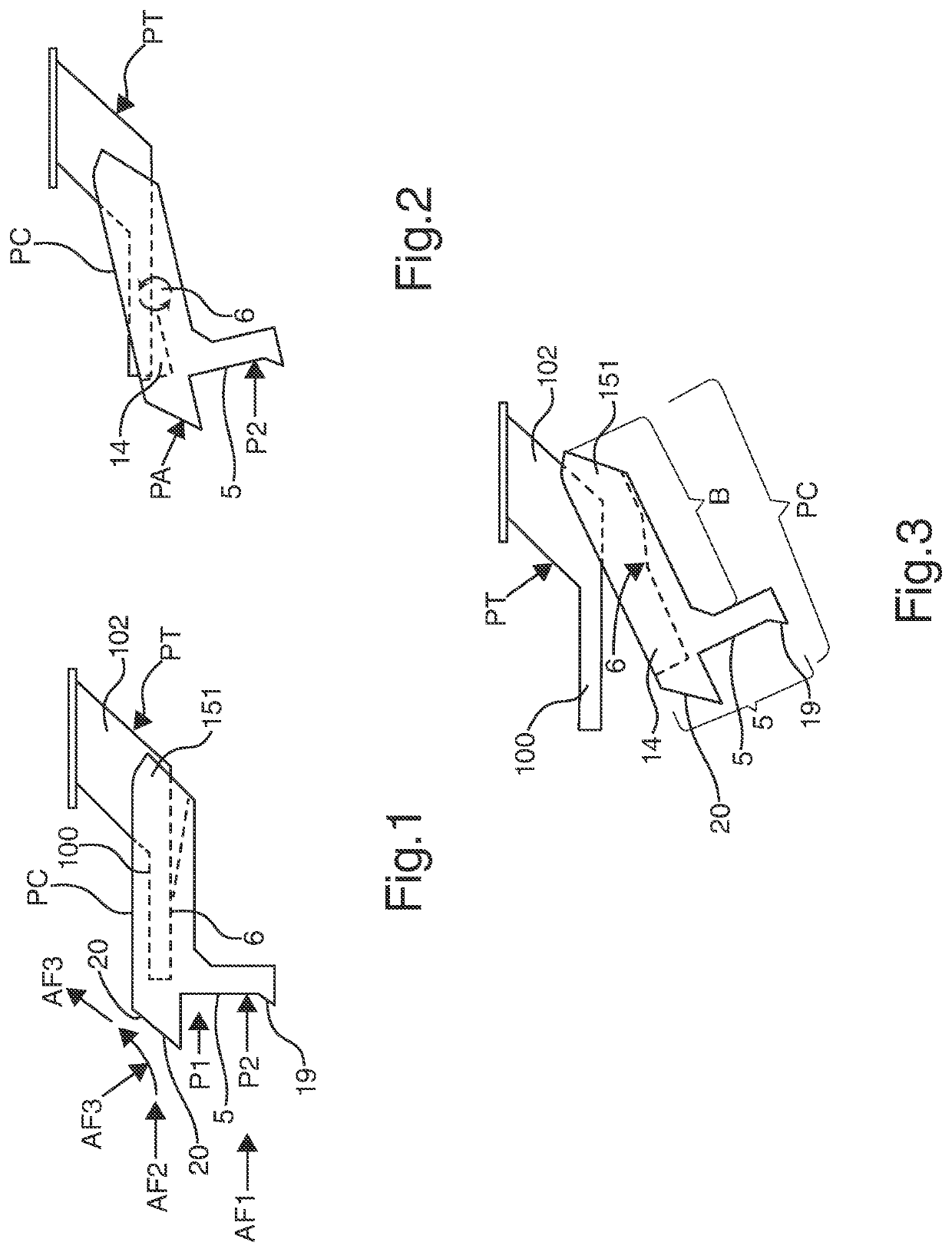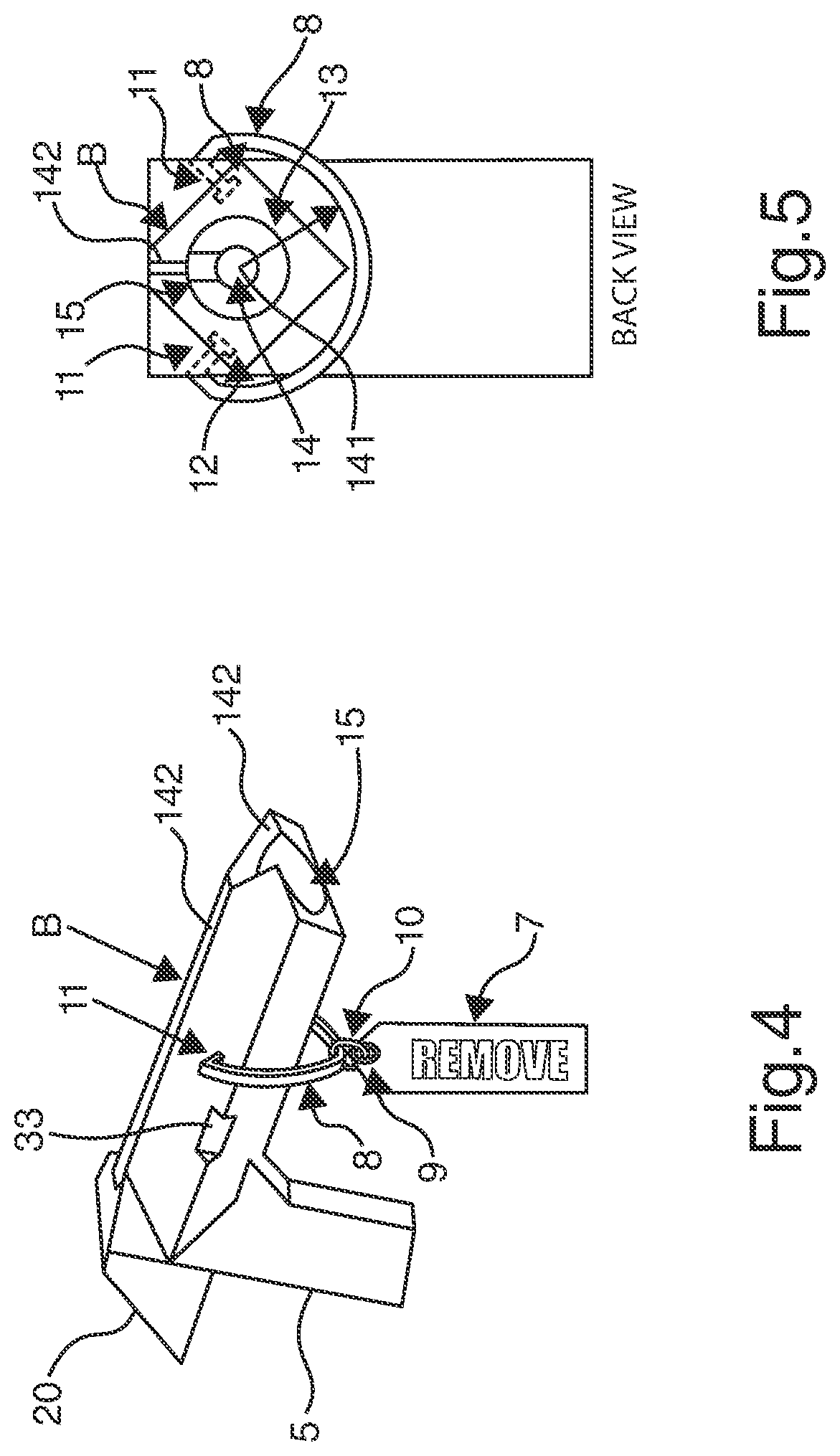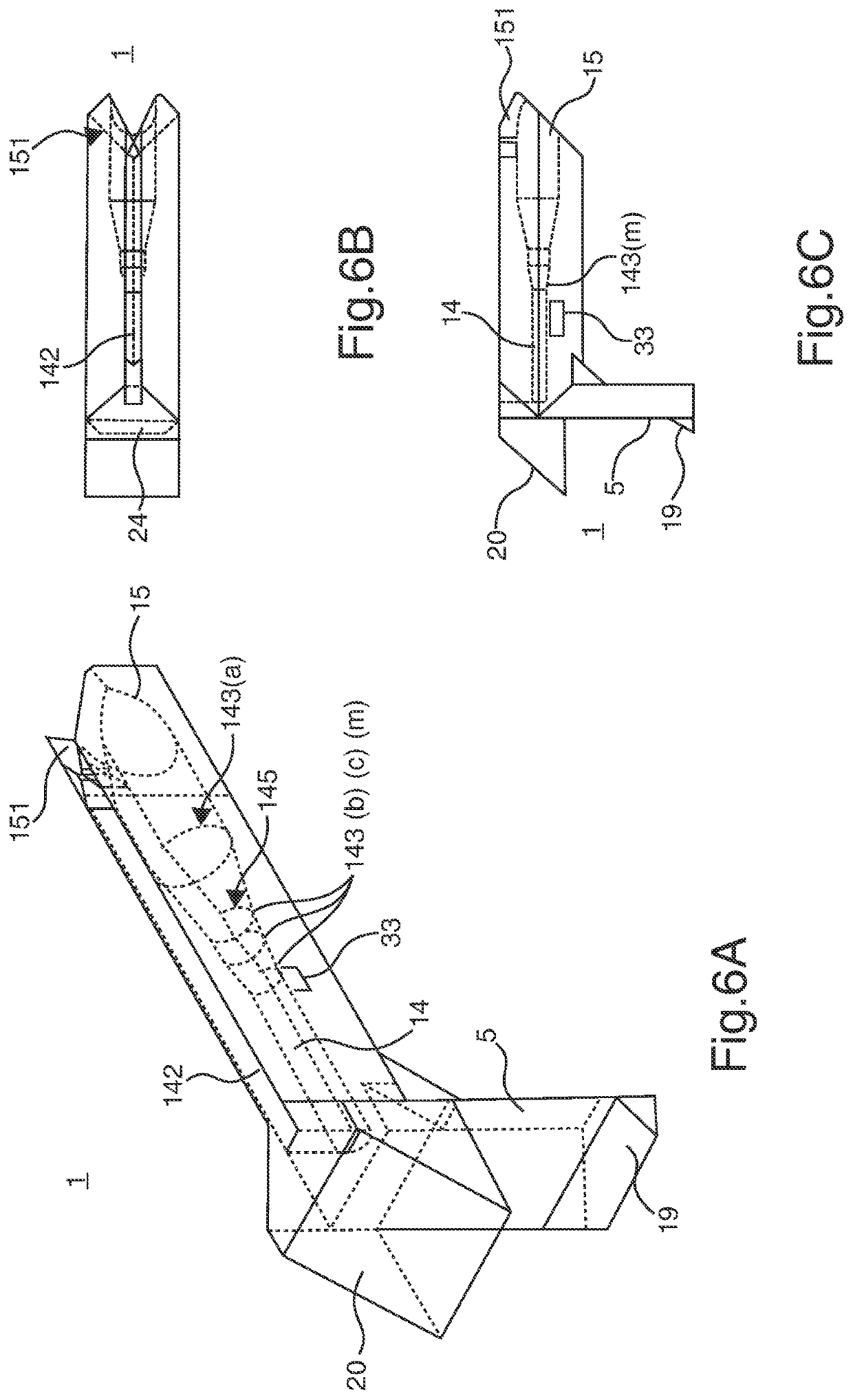Unfortunately, insects, spiders or other
vermin enter and / or build nests within the pitot tubes thereby interfering with an accurate reading of the ram air pressure and, thus, the air speed.
Conventional types of pitot tube covers are often costly and complicated.
When this happens, the
pilot is without knowledge of the
airspeed and is in a potentially dangerous situation.
Such
contamination can occur while the aircraft is parked on a ramp or even in a hanger, causing obstruction and inaccurate
airspeed indications.
There is a problem with conventional pitot tube covers, however.
Despite having large visible RBF (Remove Before Flight) Flags attached, numerous cases have been documented where pilots, or ground
crew, fail to remove the pitot tube cover prior to taking off, thereby contributing to a potential catastrophe.
Prior art self-disengaging pitot tube covers are vulnerable to forces that cause them to rotate about the longitudinal axis of a round pitot tube.
This rotation could result in the pitot tube cover not automatically disengaging, and staying in place.
This is especially egregious in the case of aircraft at
takeoff.
This can keep the cover from automatically self-disengaging, and can even make manual removal problematic.
Fouling of the pitot tube opening also can become an issue.
Exact fitting of a pitot tube cover for each type and size of pitot tube leads to substantial logistical challenges, and unnecessary expense.
A small number of each of the different pitot tube sizes and shapes requires only
low volume production, resulting in relatively high production costs per piece.
When the material constituting the pitot tube cover is soft and fits closely around the pitot tube, there's a chance that the open end of the pitot tube will stick or bind due to the deformation of the softer surrounding material.
This could stop automatic disengagement from occurring, and could compromise the entire purpose of the pitot tube.
Because of the wide variety of vehicle types, sizes, and uses on which pitot tubes are mounted, installation of pitot tube covers is often problematic.
Very often, a maintenance
crew cannot reach the pitot tube easily in order to install and / or remove the necessary pitot tube covers.
While a wide variety of different extension devices exist, none of them appear to be configured to easily interface with existing pitot tube covers.
This can render basic maintenance and protection of the pitot tube extremely difficult, and expensive.
Because some pitot tube cover materials are fragile, or do not admit to easy modification, additional structure to enhance pitot tube operation can be problematical.
Unfortunately, most of these are so invasive as to substantially degrade such materials as light weight cross-link
polyethylene foam, which constitutes many conventional pitot tube covers.
Unfortunately, there is a tendency for some of the pieces to “hang up” on the pitot tube, especially when incomplete separation of the pitot tube cover pieces occurs.
Pieces of a pitot tube cover that continue to be “hung up” on the pitot tube can block the pitot tube, or create other hazards for aircraft in motion.
As designs for pitot tube covers become more elaborate (to address the many variations in operating conditions), the expense of the pitot tube covers also increases.
This can be anathema to earlier designs, which use flimsy materials, or entirely frangible materials.
Further, failsafe methods of reconnecting pitot tube cover parts into a whole cover so that safe, reliable self-disengagement will occur in the future add greater complexity and potential problems.
This in itself would increase the cost of the pitot tube cover structure.
However, low cost must also be maintained due to the difficulty of retrieving pitot tube covers after being released from moving aircraft.
Consequently, the conventional art does not meet the need for a safety pitot tube cover which will be automatically separated from the pitot tube once an aircraft, or other high speed vehicle reaches a predetermined speed.
 Login to View More
Login to View More  Login to View More
Login to View More 


